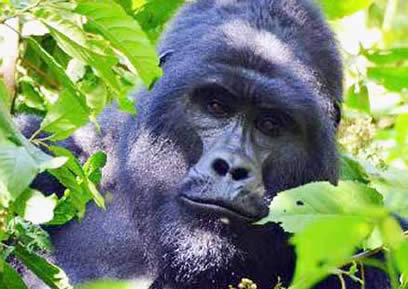
Best time to go gorilla trekking in Africa – Gorilla Safaris
The best time to trek gorillas in Africa is during the dry seasons, which vary slightly depending on the country. In Uganda and Rwanda, the optimal times are from June to September and December to February.
These periods offer the most favorable weather conditions, with less rainfall, making the forest trails less muddy and more navigable. The reduced likelihood of heavy rain enhances visibility and overall trekking experience, allowing for more comfortable and safer hikes through the dense forest.
Additionally, the dry seasons coincide with peak tourist periods, so it’s advisable to book permits and accommodations well in advance to secure your spot.
In the Democratic Republic of Congo and the Republic of Congo, the best time for gorilla trekking is also during the dry season, from June to September. These months provide a reprieve from the heavy rains that characterize the wet season, ensuring that the trails are more accessible and less treacherous.
While trekking is possible year-round, the dry season’s conditions significantly enhance the experience, reducing the challenges posed by muddy and slippery paths. For those trekking in these regions, planning your trip during these drier months will contribute to a more enjoyable and successful gorilla encounter.
In conclusion, Africa offers a range of unparalleled opportunities to see gorillas in their natural environments, providing a thrilling and enriching experience for wildlife enthusiasts. Engaging in gorilla trekking not only fulfills a once-in-a-lifetime adventure but also plays a vital role in conservation efforts, supporting local communities and safeguarding the future of gorilla populations.
IMPORTANT CONSIDERATIONS FOR GORILLA TREKKING
Permits: Gorilla trekking requires permits, which are limited in number to ensure minimal disturbance to the gorillas. Permits can be expensive and should be booked well in advance. The cost varies by country: Uganda and Rwanda charge several hundred dollars, while the DRC’s permits are generally more affordable.
Physical Fitness: Trekking to see gorillas can be physically demanding, involving steep climbs, dense vegetation, and potentially long hours of hiking. A reasonable level of fitness is recommended. Preparation with regular exercise and hiking practice can enhance the experience.
Guides and Rangers: All treks are conducted with experienced guides and park rangers who are knowledgeable about the terrain and the behaviour of the gorillas. They provide invaluable insights and ensure the safety of both visitors and the gorillas. It is crucial to follow their instructions at all times.
Health Precautions: Gorillas are susceptible to human diseases, so visitors must adhere to strict health guidelines. This includes wearing masks during the encounter, maintaining a safe distance (usually about 7 meters), and ensuring you are in good health and not carrying any contagious diseases. In some cases, you may be required to undergo a health check before the trek.
Conservation Efforts: Gorilla tourism plays a vital role in conservation efforts by generating revenue for national parks and local communities. It also raises awareness about the importance of protecting these endangered species. Visitors are encouraged to support local conservation initiatives and engage in responsible tourism practices.
Packing Essentials: Packing appropriately is crucial for a successful gorilla trekking experience. Essential items include:
- Sturdy hiking boots with good ankle support
- Lightweight, breathable clothing
- Waterproof jacket and pants (the weather can be unpredictable)
- Gardening gloves for gripping vegetation
- Insect repellent and sunscreen
- A hat and sunglasses
- Plenty of water and snacks
- A good quality camera with a telephoto lens (flash photography is not allowed)

Leave a comment: